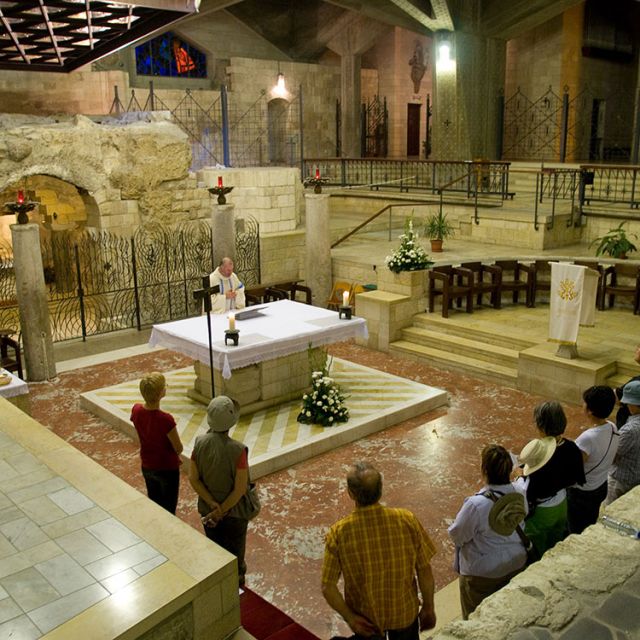“This experience is going to be with me for the rest of my life,” she said. “It is the beginning of religion, it has got so much history (and) it is just a beautiful place to come.”
Chapman, from Kingston, Ont., visited Nazareth while on a November pilgrimage. It was her first time in the Holy Land.
Now back in Canada, in the midst of Christmas preparations, Chapman’s Advent is no longer focused on bright lights, colourful decorations and elegantly wrapped presents. Instead, Chapman said she is reflecting on the immaculate conception and the birth of Christ, the true meaning of the season for Christians.
The Gospel of Luke tells us the archangel Gabriel came down from heaven to relay God’s message to the Virgin Mary that “you will conceive in your womb and bear a son, and you will name Him Jesus.” The spot where this is believed to have occurred is marked by a pillar inside the Church of the Annunciation, the largest Catholic church in the Middle East.
The church carries the designation of a minor basilica. On the first floor of the two-level building, there is a grotto believed to be the childhood home of Mary. This is where Gabriel appeared.
According to our tour guide, in the fourth or fifth century a mosaic was discovered here with the inscription “Hail Mary.” That led to the construction of an altar, still visible, inside the grotto. The Grotto of the Annunciation eventually became part of a larger shrine and today it is the centrepiece of the lower church.
Over the years, the church changed significantly as Emperor Constantine I began expanding it by building a larger structure around the cave, which he dedicated to his mother St. Helena. But Constantine’s church was destroyed in the Muslim conquest of the seventh century. The Crusaders of the early 12th century began reconstruction but failed to complete the church, which was destroyed again a century later.
That the church exists today is largely due to the efforts of Franciscan priests who served in Nazareth over the centuries. In 1620 they were granted permission to re-enclose the Grotto of the Annunciation. In 1730 they received permission to build a full-size church but, given only six months to complete the project, the Franciscans opted to build an extension off of the remaining walls of the Crusaders’ construction, which is still visible today.
In 1877 this modest structure was enlarged and then partially demolished again in 1954 to facilitate the construction of the church that stands on the site today. Designed by Italian architect Giovanni Muzio, it soars 55 metres at its peak and was constructed for $2 million between 1960 and 1969. During construction, the church was dedicated to Pope Paul VI.
Among many notable features, the interior of the upper church is decorated with dozens of stained glass windows, mosaics, carvings and other depictions of Mary that were donated by nations from around the world. Natural light floods through a large dome above the altar. The front door of the church depicts major events in the life of Jesus.
Despite the many changes to the church Chapman said the power of the place is still very strong.
“It is just a feeling,” she said. “It is something that you can’t see. This just makes you feel a bit closer to (your faith).”

